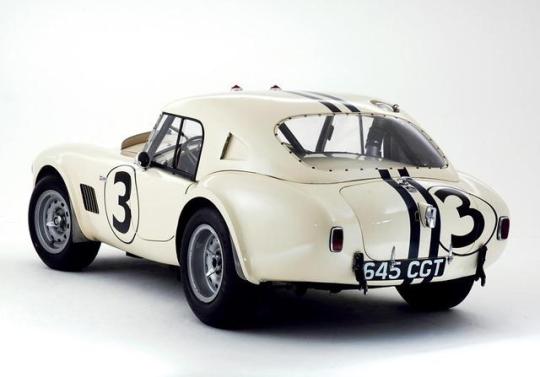#Shelby Cobra Hardtop
Text

Shelby Cobra Hardtop
#Shelby Cobra Hardtop#usdm#stance#modified#tuning#retro rides#tuner#slammed#street#lowered#fitment#static#60s sports cars#classic car#vintage cars#muscle#convertible#roadster
3K notes
·
View notes
Text
What Bad Economic climate . Muscular Tissue Automobiles Still Market Like Hotcakes!
Now that the first round of January 2010 public auctions lag us it's time to take a rate what 2010 will hold for the world of timeless muscle autos... and my hunch is that it's going to be a terrific year! It's been said that no matter what occurs in the economy, toys will constantly sell (like aircrafts, yachts, and obviously muscle mass autos)!
Also horrendous weather really did not quit Barrett Jackson from moving $68 Million dollars well worth of stock via their public auction last week, which was 11% up from 2009. Much more telling than that also was the truth that 40 % of the prospective buyers were doing so for the very first time ever, and also 35% of the vendors were brand-new to Barrett Jackson too. These statistics are impressive as well as reveal that the collection agency cars and truck hobby is as strong as ever before, however does it prove muscle mass cars are the reason? Well ....7 of the leading 10 sellers at Barrett Jackson were muscle mass automobiles! Right here is the listing of the top 10 priced movers and shakers - as well as see if you can identify a fad:
1929 Hamilton Metalplane H47 Serial # 65 Aircraft - $671,000.
1964 Shelby Cobra Roadster - $478,500.
1963 Shelby Cobra Roadster - $401,500.
1935 Cadillac Collection 40 Fleetwood Imperial Convertible - $302,500.
Mike Savage New Canaan
2011 Ford Mustang Gt Glass Roof Covering Coupe - $300,000.
1970 Plymouth Hemi Superbird 2 Door Hardtop - $286,000.
1952 Watson Roadster Custom By Blastolene - $280,500.
2008 Ford Mustang Fr500s Fastback Racecar - $275,000.
1970 Ford Mustang Employer 429 Fastback - $275,000.
1967 Ford Mustang Custom Fastback - $253,000.
That's right - muscle mass cars and trucks own 70% of the leading 10 autos sold! If you reject the truth that a plane got on this listing (and no, it had not been a "muscle plane"), that implies that 7 of the leading 9 automobiles were pure American muscle mass, as well as I assume that I recognize why that holds true.
1) Timing.
Without question, muscle mass autos are the best segment in the enthusiast car sector now, and some fast math will certainly reveal you that the young boys that couldn't afford these cars and trucks when they were new are currently in their mid 50's to early 60's ... and they have some money to spend. They're going after that dream they constantly intended to fulfill! It would certainly be like asking out your partner once more for the very first time - only you're 58 and also she's 18! Really, that contrast might lead us down a hazardous roadway. Going on.
In the sector of enthusiast autos there seems a consistent pattern because the vintage of hot enthusiast cars and trucks is usually around 40 years old... however does that mean that the regime of muscular tissue autos will sooner or later finish? Maybe, however I don't believe so. Maintain reading.
2) Design.
Mike Savage New Canaan
For whatever reason, 1960's and also 70's age muscle mass automobiles don't appear to age at all. Model T's look like old vehicles. Packard's appear like old cars and trucks. Desoto's appear like old autos. Even a '57 Chevy looks older... but a '69 GTO doesn't! Children today group to these style of vehicles equally as long as the older crowd does. There is a BIG reason that the 2010 Mustang, Challenger, and Camaro have some acquainted lines, and it's no coincidence that the rapid vehicle in the most recent block buster film was made in 1967, not 2007.
3) Customization.
The aftermarket has never been hotter than it is right now developing parts to make old muscular tissue vehicles just as rapid - and also comfortable - as brand-new ones ... however without quiting the style. Pet crate engines, brakes, suspension, R-134 air-conditioning, overdrive paddle-shifted automatic transmissions ... it's in place, and also people are acquiring it up like insane. Many people have questioned how promptly the globe of burning engine cars and trucks would concern an end if in the following 10 years we relocated from nonrenewable fuel sources to another thing ... yet I'm thinking that where there's a will, there's a means. Someone, someplace will certainly develop a way to run a large block Ford on cow manure, if that's what it takes. I ensure it.
Here's to a brilliant future ... as well as allow's hope that it's cow manure free under the hood.
0 notes
Text
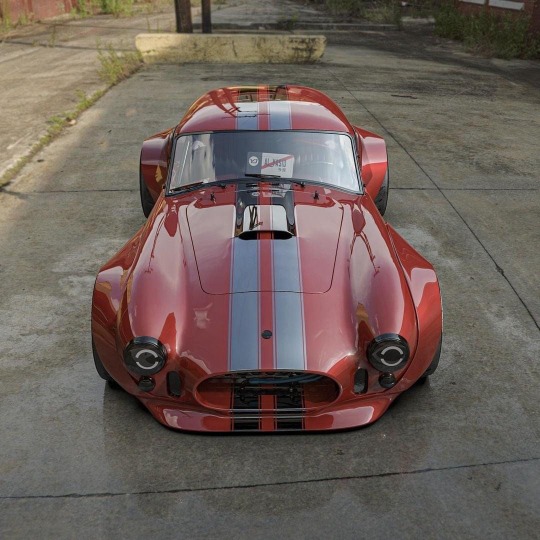
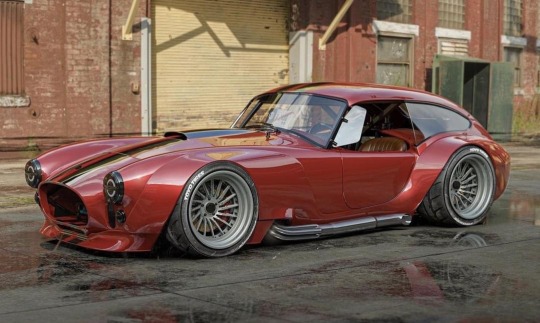
#shelby#cobra#hardtop#muscle car#muscle cars#musclecar#musclecars#american muscle#classic#classic car#classic cars#kustom kulture#kustomblr#kustom#custom#car#cars#shelby cobra
772 notes
·
View notes
Photo
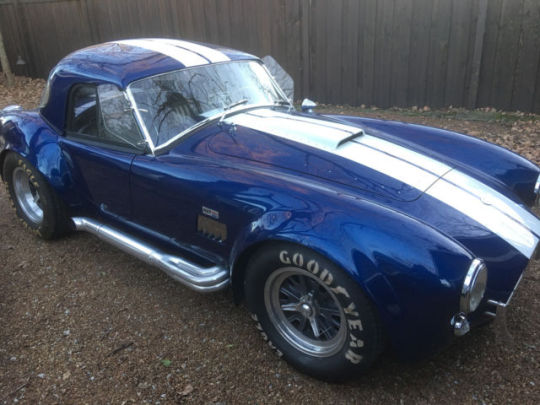
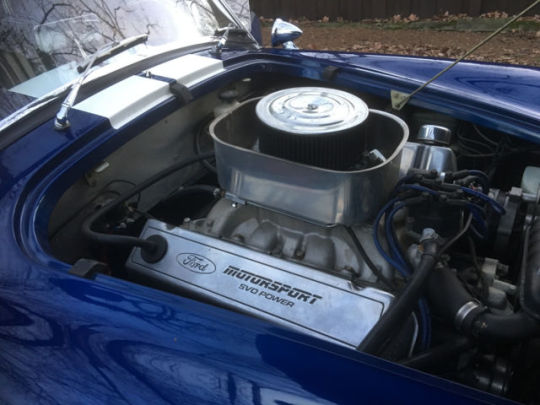

on my dream car list
#ford#shelby#cobra#superformance#mkiii#old school white letter tires#visible v8#manual transmission#removable hardtop#royal blue
3 notes
·
View notes
Photo
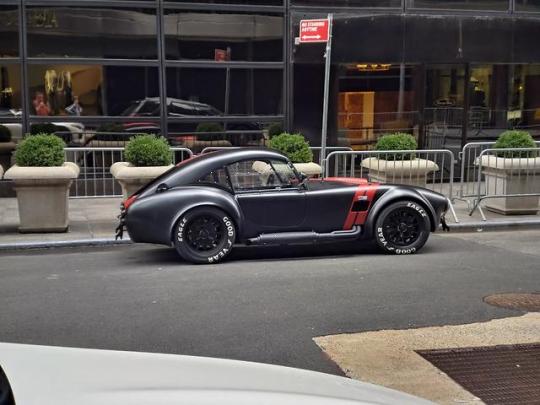
Hardtop Shelby Cobra? Possibly reproduction? Seen in midtown Manhattan.
via reddit
51 notes
·
View notes
Photo

Americana: Mustang Hardtop barn find by Andrea Lattanzio https://flic.kr/p/RE1hYX
35 notes
·
View notes
Text
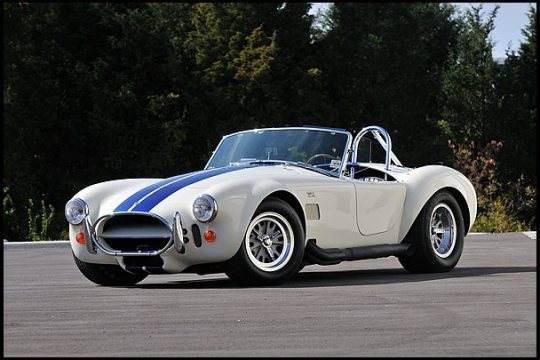
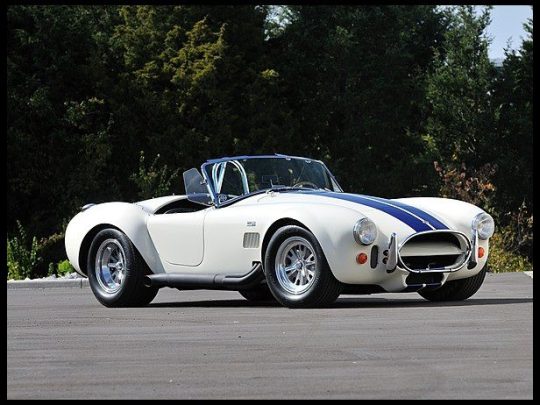
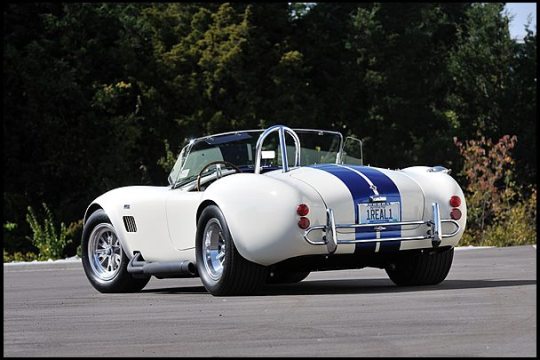
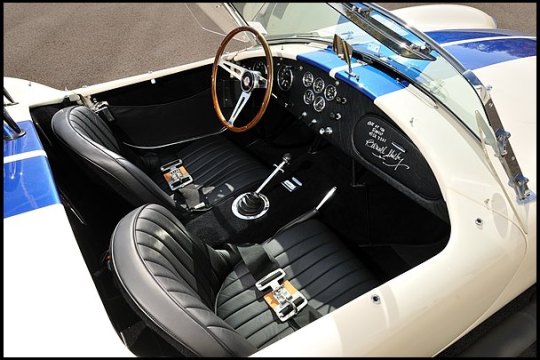
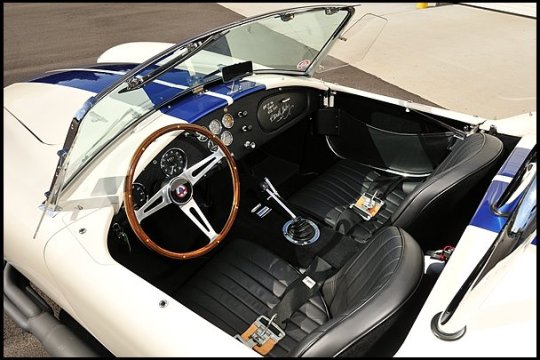

1966 Shelby Cobra 427 Roadster CSX3301 (part two of two)
HIGHLIGHTS
- 392 built
- 6,755 miles
- CSX3301 was the first car in the third production group of 427 Cobras
- Completed at AC Cars for delivery directly to Ford Advanced Vehicles in Slough, England
- Never invoiced to Shelby American and did not show in American DMV records
- Factory equipped with:
- Smith gauges
- Hardtop
- 427 CI 8 cylinder engine
- Sunburst wheels
- Purchased new by a Mr. Franck of Paris, France who sold it to GT40 owner Jean-Pierre Van Den Doorn of Paris
- It arrived in the US in New Jersey August 1977
199 notes
·
View notes
Text

Shelby Cobra Hardtop
#Shelby Cobra Hardtop#usdm#stance#modified#tuning#retro rides#tuner#slammed#street#lowered#fitment#static#60s sports cars#classic car#vintage cars#convertible#roadster
823 notes
·
View notes
Text
Mike Savage New Canaan What Bad Economy? Muscle Cars Still Sell Like Hotcakes!
Now that the first round of January 2010 auctions are behind us it's time to take a guess at what 2010 will hold for the world of classic muscle cars......and my guess is that it's going to be a great year! It's been said that regardless of what happens in the economy, toys will always sell (like airplanes, yachts, and apparently muscle cars)!
Even horrendous weather didn't stop Barrett Jackson from moving $68 Million dollars worth of inventory through their auction last week, which was 11% up from 2009. More telling than that even was the fact that 40 % of the bidders were doing so for the first time ever, and 35% of the sellers were new to Barrett Jackson as well. These statistics are impressive and show that the collector car hobby is as strong as ever, but does it prove muscle cars are the reason? Well......7 of the top 10 sellers at Barrett Jackson were muscle cars! Here is the list of the top 10 priced movers and shakers - and see if you can spot a trend:
1929 Hamilton Metalplane H47 Serial #65 Airplane - $671,000
1964 Shelby Cobra Roadster - $478,500
1963 Shelby Cobra Roadster - $401,500
1935 Cadillac Series 40 Fleetwood Imperial Convertible - $302,500
2011 Ford Mustang Gt Glass Roof Coupe - $300,000
1970 Plymouth Hemi Superbird 2 Door Hardtop - $286,000
1952 Watson Roadster Custom By Blastolene - $280,500
2008 Ford Mustang Fr500s Fastback Racecar - $275,000
1970 Ford Mustang Boss 429 Fastback - $275,000
1967 Ford Mustang Custom Fastback - $253,000
That's right - muscle cars own 70% of the top 10 cars sold! If you dismiss the fact that an airplane was on this list (and no, it wasn't a "muscle airplane"), that means that 7 of the top 9 cars were pure American muscle, and I think that I know why that's the case.
1) Timing
Without question, muscle cars are the hottest segment in the collector car industry right now, and some quick math will show you that the young boys that couldn't afford these cars when they were new are now in their mid 50's to early 60's.....and they have some money to spend. They're going after that dream they always wanted to fulfill! It'd be like asking out your wife again for the first time - only you're 58 and she's 18! Actually, that comparison could lead us down a dangerous road. Moving on.
In the industry of collector cars there appears to be a consistent trend in that the vintage of hot collector cars is generally about 40 years old......but does that mean that the reign of muscle cars will someday end? Maybe, but I don't think so. Keep reading.
2) Style
For whatever reason, 1960's and 70's era muscle cars don't appear to age at all. Model T's look like old cars. Packard's look like old cars. Desoto's look like old cars. Even a '57 Chevy looks older......but a '69 GTO doesn't! Kids today flock to these style of cars just as much as the older crowd does. There is a BIG reason that the 2010 Mustang, Challenger, and Camaro have some familiar lines, and it's no coincidence that the fast car in the latest block buster movie was made in 1967, not 2007.
Mike Savage New Canaan
3) Customization
The aftermarket has never been hotter than it is right now creating parts to make old muscle cars just as fast - and comfortable - as new ones....but without giving up the style. Crate engines, brakes, suspension, R-134 air-conditioning, overdrive paddle-shifted automatic transmissions.....it's all there, and people are buying it up like crazy. Many people have wondered how quickly the world of combustion engine cars would come to an end if in the next 10 years we moved from fossil fuels to something else....but I'm guessing that where there's a will, there's a way. Someone, somewhere will come up with a way to run a big block Ford on cow manure, if that's what it takes. I guarantee it.
Here's to a bright future....and let's hope that it's cow manure free under the hood.
0 notes
Text
ФОТОГАЛЕРЕЯ: Solido Shelby AC Cobra 427 Hardtop 1965
В этом году команда Solido была в восторге: помимо потрясающего ассортимента новых моделей по привлекательной цене, бренд также получил две позиции в окончательном списке кандидатов на звание модели года 2020 DiecastSociety.com. Молодцы, господа. Еще... Читать дальше »
0 notes
Text
The Dodge Viper: History, Generations, Models, and More
Dodge Viper Essential History
First Generation
The Dodge Viper first came about as an idea of Chrysler’s then-president Bob Lutz, who wanted the brand to build its own sports car in the vein of the Shelby Cobra. Shortly after, Chrysler designer Tom Gale had produced a clay model of what would become the Viper, and plans for a V-10 engine that would be shared with Ram pickups were underway. Chrysler CEO Lee Iacocca greenlighted the project and the world first saw the Dodge Viper as a concept at the 1989 Detroit auto show. While Cobra patriarch Carroll Shelby was involved in the project, his involvement was at a minimal level, primarily helping to publicize and market the car.
In 1992, the production Viper RT/10 was displayed at that year’s Detroit auto show with styling that remained in line with the previous concept. With a 400-hp, 465-lb-ft, 8.0-liter V-10 engine co-developed by Chrysler-owned Lamborghini, a six-speed manual transmission and virtually no creature comforts (the Viper lacked glass side windows, air-conditioning, stability control, ABS, a roof and exterior door handles), the Viper was the new bad boy sports car for the 1990s. Zero to 60 mph happened in just 4.2-seconds, far quicker than a new standard Chevrolet Corvette or Porsche 911 Carrera 2, and top speed was over 160 mph.
Second Generation
The second-generation Dodge Viper arrived in 1996, but there were few initial changes to the RT/10 roadster. Power increased to 410 hp and 488 lb-ft of torque halfway through the ’96 model year, and a fiberglass hardtop was added as an option, while the side-exit exhaust was replaced with a conventional rear-exit design. The big news was the Viper GTS coupe, which came at the end of 1996. Just as the roadster had taken styling cues from the drop-top Shelby Cobra, the coupe borrowed from the Shelby Daytona Coupe. The GTS was a still a brutish car and made even more power, now rated at 450 hp and 490 lb-ft, but also boasted niceties such as air conditioning, exterior door handles, power glass side windows, and airbags. The following year, the more powerful engine, glass side windows, and airbags were standard on the roadster as well.
Third Generation
A new Viper roadster arrived for the 2003 model year dubbed the Viper SRT-10. With input from Chrysler’s SRT performance division, the only model offered initially was a roadster, which featured sharper lines than the curvaceous first- and second-gen Vipers. The V-10 engine remained, bumped in displacement to 8.3 liters and lightened, resulting in 500 hp and 525 lb-ft. Overall, this Viper was slightly larger than its predecessors, but also lighter by a couple hundred pounds. A Viper SRT-10 coupe arrived in 2005 with another bump in power, now to 510 hp and 535 lb-ft.
Fourth Generation
As history would tell you, more power was key to going forward with the fourth-generation Dodge Viper. For the 2008 model year, the Viper was again reborn with an 8.4-liter V-10 engine that now made 600 hp and 560 lb-ft of torque with extensive revisions to the cylinder head, including variable valve timing and twin throttle bodies. A new six-speed Tremec manual gearbox, revised suspension, a limited-slip differential and other improvements began to shift the Viper’s focus from a high-powered toy to a more focused performance car. To emphasize this point, a higher performance Viper ACR set a Nürburging lap record before Dodge announced it would kill the car in 2010.
Fifth Generation
Despite indications to the contrary, a new fifth-generation Viper was being shown to dealers and VIPs by the end of 2010, though it wouldn’t be until 2012 that the new production car would be unveiled at that year’s New York auto show for the 2013 model year. Keeping the 8.4-liter V-10 engine, now producing 640 hp and 600 lb-ft, nearly everything else was changed, with a new six-speed manual transmission, reworked body panels made from carbon fiber and aluminum, and finally, electronic stability control and traction control. The Viper’s 0-60 mph time was down to 3.5 seconds and the top speed was finally above 200 mph. By 2015, power was raised once again to 645 hp. Despite more capability and sophistication than ever before, the fifth-generation Viper simply wasn’t selling well, leading to plenty of special-edition models. In 2017, the Viper was again killed, the publicized reason being that it had no way of including now-mandatory side-curtain airbags on the current platform.
Dodge Viper Highlights
As high-performance a vehicle as any Viper is, Dodge made several even more potent variants. The first special variant was the second-generation Viper GTS ACR (American Club Racer), with uprated power (460 hp/500 lb-ft), 50 lbs less weight, fog lamps replaced with brake cooling ducts, stiffer suspension and 20-spoke BBS wheels. An GT2 Commemorative Edition was also available as a limited 100-car run with a GTS-R race-car lookalike rear wing, blue-and-white paint scheme, five-point racing harnesses, and other aero aids.
In 2008, a Viper ACR was again offered with grippier Michelin tires, along with special brakes, suspension, aero enhancements, but no extra power. A Hardcore Package also deleted plenty of creature comfors including the radio, air conditioning, and trunk carpet, while a lap-timer and even more advanced aero were also included. In 2016, another Viper ACR plus optional ACR Extreme Aero Package came online.
The Viper ACR-X was available from 2010 which bumped horsepower by 40 hp over the standard ACR and added front aero canards, unique headers, a minimalistic interior and other upgrades, thought the car was not street-legal and intended for racing or track events only. A street-legal TA (Time Attack) variant was also available between 2013 and 2016, available in 1.0 and 2.0 spec. These cars had sophisticated Bilstein suspension, special wheels, Brembo brakes, a carbon fiber X-brace, and lots of aero add-ons.
Dodge Viper Buying Tips
Generally speaking, used Dodge Viper prices (remember, the Viper is out of production) increase as the cars get newer, as typical of most “used cars.” First- and second-generation roadsters are typically the most affordable, with second-generation GTS coupes following, then third-, fourth-, and fifth-generation cars rounding out the lot in progressing expense. Special- and limited-edition models, like ACR cars and the GT2 Championship Edition command varying premiums over standard cars. A word of caution: Vipers attract owners who like to put their foot down pretty hard and many have also been tuned (amateurishly, in many cases) to within an inch of their lives. The sum-up? Proceed with caution and retain a knowledgeable Viper expert to help you inspect a potential buy for unseen problems.
Dodge Viper Articles on Automobile
First Dodge Viper Ever Built Sells for Big Bucks
Viper number one was first owned by Lee Iacocca
FCA Will Shutter Dodge Viper Plant on August 31
Viper production comes to an unfortunate close.
The Dodge Viper is (Actually) Dead
Sad news broken by Ralph Gilles ahead of Chicago
How to Buy an Early Viper Without Getting Defanged
Snakes alive!
Dodge Viper Celebrates End of Production with Five Special Editions
The end of an era culminated in five special editions
2016 Dodge Viper ACR Shatters 13 Production-Car Lap Records
The car for when you absolutely, positively have to be the fastest.
2016 Dodge Viper ACR Review
A monster in killer’s clothing, and we want one.
Good-Bye, 2015 Dodge Viper GT
Enjoying some of the final miles we’ll get in Dodge’s shot of anger.
2014 SRT Viper TA Review
Behind the wheel of Time Attack Viper
Dodge Viper SRT10
Our first look at the third-generation Viper
Decades of Venom
Our Dodge Viper drives through the years
Dodge Viper Recent Auctions
2016 Dodge Viper ACR Extreme
2016 Dodge Viper TA 2.0
2015 Dodge Viper SRT GT
2013 SRT Viper GTS
2005 Dodge Viper SRT-10
1998 Dodge Viper GTS GT2 Championship Edition
1996 Dodge Viper GTS
1995 Dodge Viper RT/10
1993 Dodge Viper RT/10
Dodge Viper Quick Facts
First year of production: 1992
Last year of production: 2017
Total sold: 31,850 (approx.)
Original price (base): $50,000
Characteristic feature: Loud, brash and uncouth, the Dodge Viper is America’s most venomous sports car, a take on the Shelby Cobra for a new age.
Dodge Viper FAQ
Why was the Dodge Viper discontinued?
FCA canceled Viper production primarily due to flagging sales and other more profitable priorities, though the official reason was that the car wouldn’t accept mandatory side-curtain airbags.
How much is the Dodge Viper?
Generally speaking, the earliest Viper roadster models command prices in the mid-$20,000 range, while special editions and the latest cars can bring upwards of $100,000. Others lie in-between these prices.
How much is a 2019 Dodge Viper?
Dodge ended viper production in late 2017, no 2019 model was produced.
How fast is a Viper car?
The 0-60 mph time on a Viper varies from around 3.5-seconds to 4.5 seconds. Top speed ranges from 160 mph to over 200 mph, depending on variant and year.
Is a Viper a supercar?
While early Vipers weren’t quite as focused, by the end of Viper production, the cars were certainly at supercar levels of performance and set numerous production car lap records around the world.
2013 Dodge SRT Viper GTS Specifications
Price: $122,390 (includes gas-guzzler tax) Engine: 8.4L OHV 20-valve V-10/640 hp @ 6,200 rpm, 600 lb-ft @ 5,000 rpm Transmission: 6-speed manual Layout: 2-door, 2-passenger, front-engine, RWD coupe EPA Mileage: 12/19 mpg (city/hwy) L x W x H: 175.7 x 76.4 x 49.1 in Wheelbase: 98.8 in Weight: 3,374 lb 0-60 MPH: 3.4 sec (est) Top Speed: 177 mph
2014 Dodge SRT Viper TA Specifications
Price: $123,080 (includes gas-guzzler tax) Engine: 8.4L OHV 20-valve V-10/645 hp @ 6,200 rpm, 600 lb-ft @ 5,000 rpm Transmission: 6-speed manual Layout: 2-door, 2-passenger, front-engine, RWD coupe EPA Mileage: 12/19 mpg (city/hwy) L x W x H: 175.7 x 76.4 x 49.1 in Wheelbase: 98.8 in Weight: 3,390 lb 0-60 MPH: 3.4 sec (est) Top Speed: 177 mph
2015 Dodge Viper GT Specifications
Price: $99,090 (base) Engine: 8.4L OHV 20-valve V-10/645 hp @ 6,200 rpm, 600 lb-ft @ 5,000 rpm Transmission: 6-speed manual Layout: 2-door, 2-passenger, front-engine, RWD coupe EPA Mileage: 12/21 mpg (city/hwy) L x W x H: 175.7 x 76.4 x 49.1 in Wheelbase: 98.8 in Weight: 3,415 lb 0-60 MPH: 3.4 sec (est) Top Speed: 206 mph
2016 Dodge Viper ACR Specifications
Price: $122,490 (includes gas-guzzler tax) Engine: 8.4L OHV 20-valve V-10/645 hp @ 6,200 rpm, 600 lb-ft @ 5,000 rpm Transmission: 6-speed manual Layout: 2-door, 2-passenger, front-engine, RWD coupe EPA Mileage: 12/21 mpg (city/hwy) L x W x H: 175.7 x 76.4 x 49.1 in Wheelbase: 98.8 in Weight: 3,392 lb 0-60 MPH: 3.4 sec (est) Top Speed: 177 mph
The post The Dodge Viper: History, Generations, Models, and More appeared first on Automobile Magazine.
The Dodge Viper: History, Generations, Models, and More published first on https://kwsseuren.tumblr.com/
0 notes
Photo
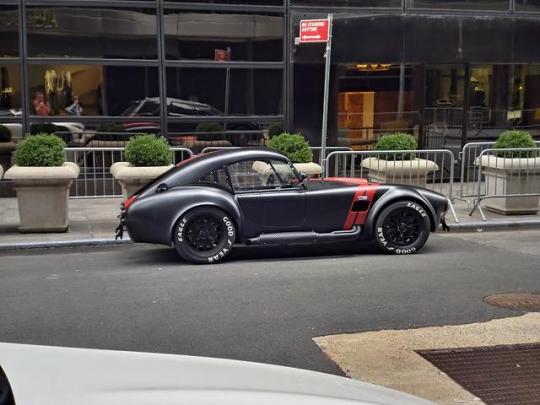
Hardtop Shelby Cobra? Possibly reproduction? Seen in midtown Manhattan. 撸先生:看片神器,每日更新,高清流畅,无需翻墙,t.cn/EVvnoK4
1 note
·
View note
Photo

New Post has been published on http://fastmusclecar.com/muscle-car/top-8-ford-muscle-cars-that-you-should-know-about/
Top 8 Ford Muscle Cars That You Should Know About
Ford muscle cars were once some of the best of the muscle car era.
In the 1960’s, Ford basically ruled racetracks across the world. But in the streets of muscle car wars, Ford was still playing catch-up even with the Mustang. It wasn’t until Ford’s 1968 428 Cobra Jet, that gave Ford muscle cars were given serious street cred.
If you’re considering a muscle car, or simply want to learn more about these majestic vehicles keep reading. We got you covered with all the information you’d ever want to know about the top Ford muscle cars that defined a generation.
1. One of The Best Ford Muscle Cars: 1968 Mercury Cougar GT-E
This is one of the most overlooked performance cars from 1968. The 1968 Cougar GT-E, is one of the rarest cars and is incredibly valuable today, and we can see why.
If the Road Runner was at the top of bare-bones performance, then the Cougar GT-E would represent the other side of the muscle car spectrum with a price that reflects that. You do not want to overlook this powerhouse of a car.
A GT-E package would cost the buyer $1,311 alone, which is almost half of the price of an entire 383-powered Road Runner, when this car debuted in 1967.
When the Cougar debuted in 1967, Motor Trend named it Car of the Year. Which came as a shock, as many would assume that title would go to the more gussied up Mustang. These two cars do have the same engine.
2. 1968 Ford Fairlane Torino GT
It’s no shock that the late 1960’s inspired a rise of budget muscle cars that spread like wildfire. After the Road Runner’s success, every other muscle car manufacturer raced to get their cars on the streets ASAP.
Ford did not want to miss out and redesigned the Fairline Torino in 1968 with a Mustang like fastback that streamlined this car for NASCAR’s speedways. This car’s new shape came in a variety of engine, 289, 302, and also 390.
So Ford built 600 of these hardtops with a 428 Cobra Jet and C6 automatics. 193 of these cars come with a 3.91 rear axle ratio. The car itself doesn’t come with much decoration, simply a badge on its front fender.
3. 1969 Mercury Cougar Eliminator
The turning point for the Ford Mercury Cougar happened in 1969 with the Mercury Cougar Eliminator. This car isn’t totally Mustang’s cousin, as it comes from Ford’s slightly more upscale division that came into its own this year. This car not only has a convertible, but also an Eliminator option giving this Cougar some fangs.
This car is longer, wider, and heavier than the 1968 version. The 1969 car has the same 111-inch wheelbase wit three more inches than the Mustang, which gives the Cougar more legroom.
This vehicle’s body has a different style than the Ford pony, with a sharp crease on the flanks from the nose to each side, This design ends just at the edge of the rear wheel arches, which is not that much different of a design from how the Buick Skylark stood out from the Chevy Chevelle.
Similar to the Mustang, the Mercury Cougar had a redesign in 1969, gaining 3.5 inches in length, and 3 inches of width. The Cougar Eliminator has a stripe down its flanks, sporting the word Eliminator with a sizeable rear wing like Mustangs and a hood scoop
4. 1969 Ford Talladega
This car is on its own mission. Ford was watching the taillights of faster cars like Mopar and GM muscle rivals in the 1960s and early 1970s. This car was named after NASCAR’s newest superspeedway, Talladega.
The 1969 Ford Talladega was Ford’s answer to Dodge’s Charger 500, so Ford built the street version of this car so it could qualify for racing. This car is similar to the Mercury Cyclone Spoiler.
For this car to be eligible to race, NASCAR only required Ford to build 500 units. Instead, Ford built 736 all with a C6 automatic, 428 CJ and a column shifter. To make the Talladega, Ford had to extend the Torino’s front ends by 15.5 inches, also adding a 30-degree slant and a grille that’s flush-mounted.
Ford then modified the rear bumper with a V-shape and mounted it, altering the rocker panels so the car would have an aerodynamic benefit. This design also staggered the rear shocks.
The design has a few emblems of T above the fake gas cap in the center of the tail and door handles. This vehicle comes in three colors, but all have black hoods.
5. 1970 Ford Torino Cobra
The Torino was the follow-up to Ford’s speedway superstars. While the 1968 and 1969 fastback Torino might not have done well on the racetrack, at a Ford dealership, this redesigned car jumped 52 percent in sales. Motor Trend even named this series the “Car of the Year.”
This new model was a little fragmented with a bolder look complete with a dozen various trim levels, many that were considered to be new. However, these resign really grabbed the attention of automotive media, making this car appeal to America’s high-performance set.
The Ford Torino Cobra also has strong mechanical DNA, making it the choice of several 429 big-blocks with Wide Oval tires, four manual gates, Competition Suspension, and a massive air scoop with 429CJ Ram Air.
This car also has a blacked out hood and grille, making this car the very height of in this factory-fast time period. This car also comes in a range of comfort options, giving the driver a level of personalization with this car.
The 1970 Torino is still a fastback, it just has the style and attitude to take on Road Runners and Chevy Chevelles. The Torino Cobra comes with three brand new 429 cubic-inch engines.
6. 1973 Ford Falcon XB GT
Falcons were barely new in Australia in 1975. Since 1960 Ford offered a series of Falcons, with the twin being the Falcon four-door sedans that were sold in America.
Since 1962, there were a few Austrailain market changes in design that were made in 1964. Ford of Australia started building its own signature auto-bodies under the Falcon name.
It was the 1965 Falcon XP that was a make it or break it car for Ford. This car ended paying off when it was put head to head with its nemesis on the Australian market, The Holden.
You might recognize the 1973 Ford Falcon XB GT as the car Mad Max drove, and you’d be right. But that’s not why this legendary Australian car is on our list. It’s because of this third-generation Falcon is legendary in performance for many reasons.
Not only does this car look awesome, but it’s also a cross between the 1970 Torino Cobra and the 1973 Mustang Fastback. This car isn’t much different than it’s a generation before, but it does have a new front end and a twin-scoop hood like a Mustang.
This car was made for gearheads, as it has a standard 351 Cleveland with 300 hp and a 380-pound torque. This is because of the lack of emission standards that were around when this car was made. These standards have since killed most performance cars in the United States.
The 1973 Ford Falcon XB GT is four-speed, with a nine-inch rear end that is fitted with tall gears.
7. Shelby Mustangs
The Shelby Mustang is a variant of the Ford Mustang that has higher performance value. This car was built by Shelby American from the years 1965 to 1968. Form 1969 to 1970, this car was then built by Ford.
After the 2005 introduction of the fifth generation Ford Mustang, the Shelby was revived as a newer high-performance model, only this time it was built and designed by Ford.
The famous 1965 Mustang Shelby GT 350, is a serious performance machine. Some buyers felt this car was too serious, so the next year the car replaced features like the fiberglass hood, adjustable Koni shocks, side-exit exhaust, and Detroit Locker rear diff were either removed, replaced, or just made optional.
There was even a Paxton supercharger option in the 1966 design. The GT 350s were ideal for the track. Later the GT 500s were ideal for drag racing, as they were fitted with a 428 big-block.
1967 and 1968 Shelbys were able to go on low 14 second runs of quarter miles. There was also an even faster KR model made as well.
8. 1999 Ford F-150 SVT Lightning
The 1999 Ford F-150 SVT Lighting, looks a lot different than these other muscle cars mentioned, but don’t let its appearance fool you. This car can be drag raced at 13.62 seconds at 101.16 mph, making this the faster ride of these muscle cars, which is impressive for a 4670-pound two-wheel pick-up truck.
This car is the second generation of the SVT Lightning. You’ll see under its hood that there are hot rod steep sides. There’s also a supercharged 5.4-liter single overhead v-8 cam with a boost of eight pounds and 360 hp factory rating with 440 lb-ft torque.
These trucks use a four-speed automatic transmission, a column shifter, and 18 inches, 295mm wide tires. This truck costs about $30,000, from 1999 to 2004 more than 28,000 of these trucks were made.
Get Your Muscle Car Today
Now that you know the top eight Ford muscle cars, isn’t it time you got in on the action? Find the muscle car that is right for you and your driving needs. For more information about cars, be sure to check out our website.
0 notes
Text




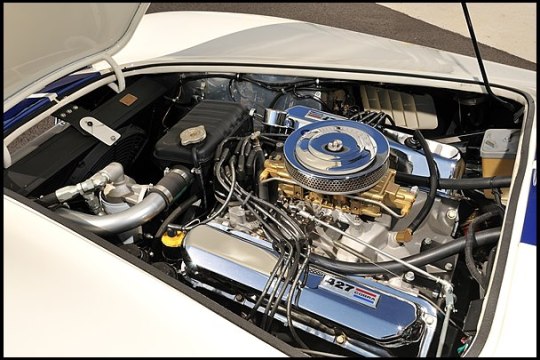

1966 Shelby Cobra 427 Roadster CSX3301 (part one of two)
ESTIMATE: $700,000 - $850,000
Every Shelby 427 Cobra is rare simply by nature, but everyone knows that within that context, some reach the level of “exceptional”, a fact Carroll Shelby acknowledged when he signed the glovebox door of CSX 3301 with the inscription,
One of the rarest
CSX3301
Carroll Shelby
The first car in the third production group of 427 Cobras, this sparkling White roadster was completed at AC Cars for delivery directly to Ford Advanced vehicles in Slough, England. As such, it was never invoiced to Shelby American and did not show up in American DMV records. Factory equipped with Smiths gauges, a hardtop, 428 engine and Sunburst wheels, it was purchased new by a Mr. Franck of Paris, France, who sold it to GT40 owner Jean-Pierre Van Den Doorn, also of Paris. Van Den Doorn placed it in his private collection and the car was seldom seen for years, until it was sold to The Vintage Car Store in Nyack, NJ in August 1977. It then went through the hands of Kirk White and then Larry Megibow, who sold the car along with a substantial bank lien to Dan Turman in 1979.
In 2001 CSX3301 was completely restored by HRE Motors in Freeport, NY, who returned it to its original White with Blue stripes, Black side pipes and chrome roll bar, and it remains the same today, with the odometer showing 10, 872 kms or 6,755 miles. The interior is outstanding, showing as new, and the engine compartment is completed to a very high standard. As Shelby noted, this is an especially unique 427; it is also gorgeously turned out and exceptionally well detailed. In addition to its listing in the Shelby American World Registry, documentation includes photos of the original ledger at AC Cars.
#1966 Shelby Cobra 427#Shelby Cobra 427#shelby cobra#racing sports#daytona cobra#motorsports#muscle car#classic car#cars#cobra#Shelby#carroll shelby#AC Cars
31 notes
·
View notes


